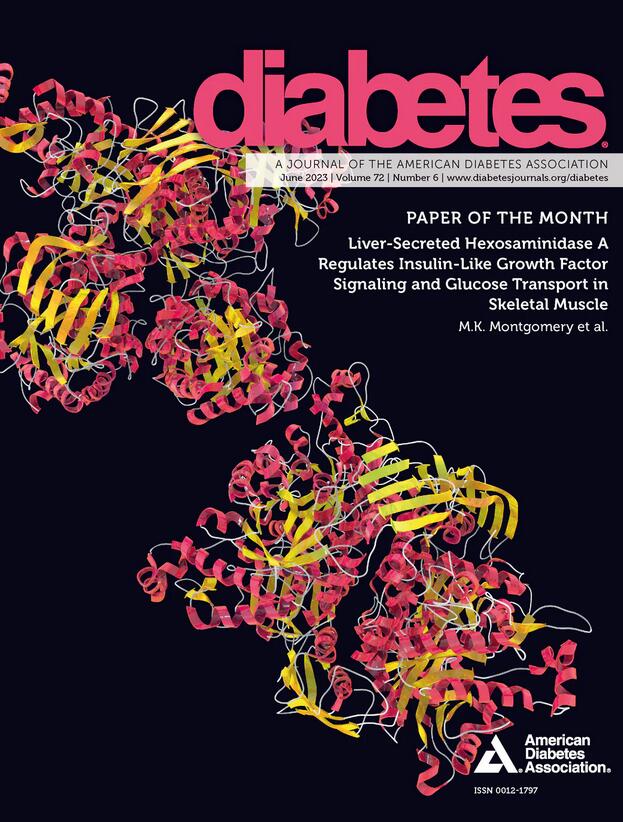504-P: Association between Handgrip Strength and Triglyceride-Glucose Index Based on the Korean National Health and Nutrition Examination Survey
IF 6.2
1区 医学
Q1 ENDOCRINOLOGY & METABOLISM
引用次数: 0
Abstract
Handgrip strength (HGS) is a simple, reliable method to measure muscle strength and assessing sarcopenia. Insulin resistance (IR) is important contributing factor to cardiovascular disease and also related with sarcopenia. In this study, we investigated the association between IR and muscle strength via the Triglyceride glucose index (TyG) index and HGS. We used data from the sixth Korean National Health and Nutrition Examination Survey to evaluate a total of 10048 subjects aged over 40. The TyG index was calculated as ln [fasting triglycerides (mg/dL) × fasting glucose (mg/dL)/2] to represent IR. We defined absolute HGS as sum of the maximum values of the right and left sides of each of the three measurements. The relative HGS was calculated by dividing the absolute HGS by body mass index. The subjects were stratified into quartiles according to the TyG index. Relative HGS was decreased as the TyG index increased in total subjects. In linear regression analysis, relative HGS showed negative correlation with metabolic parameter and the TyG index in all groups of age and gender. According to logistic regression analysis after adjusting for multiple risk factors, odds ratio (95% CI) for low muscle strength (defined as the lower 10% on relative HGS) for the highest and lowest quartiles of the TyG index was 2.513 in male and 2.161 in female on total subjects. In group of subjects with mid-age (age between 40 to 64 years old), the prevalence of low muscle strength was positively correlated with increased the TyG index both in male and female. However, in the elderly groups (age over 65 years old), relationships between the increased the TyG index quartiles and prevalence of low muscle strength were not significant in all subjects. In conclusion, the TyG index was independently associated with relative HGS and low muscle strength in mid-aged subject and could have predictive value for sarcopenia and further metabolic disease. S.Lee: None. Y.Choi: None. M.Kim: None.504-P:基于韩国国民健康和营养检查调查的握力和甘油三酯葡萄糖指数之间的关系
握力(HGS)是一种简单、可靠的测量肌肉力量和评估少肌症的方法。胰岛素抵抗(IR)是导致心血管疾病的重要因素,也与少肌症有关。在本研究中,我们通过甘油三酯-葡萄糖指数(TyG)和HGS研究了IR与肌肉力量之间的关系。我们使用了第六次韩国国民健康和营养检查调查的数据,对10048名40岁以上的受试者进行了评估。TyG指数计算为ln[空腹甘油三酯(mg/dL)×空腹葡萄糖(mg/dL)/2]来表示IR。我们将绝对HGS定义为三次测量中每一次测量的右侧和左侧最大值的总和。通过将绝对HGS除以体重指数来计算相对HGS。根据TyG指数将受试者分为四分位数。总受试者的相对HGS随着TyG指数的增加而降低。在线性回归分析中,所有年龄和性别组的相对HGS与代谢参数和TyG指数均呈负相关。根据对多种风险因素进行调整后的逻辑回归分析,在所有受试者中,TyG指数最高和最低四分位数的低肌力(定义为相对HGS的较低10%)的优势比(95%CI)在男性中为2.513,在女性中为2.161。在一组中年受试者(年龄在40至64岁之间)中,男性和女性低肌力的患病率与TyG指数的增加呈正相关。然而,在老年组(年龄超过65岁)中,在所有受试者中,TyG指数四分位数增加与低肌力患病率之间的关系并不显著。总之,TyG指数与中年受试者的相对HGS和低肌力独立相关,可能对少肌症和进一步的代谢性疾病具有预测价值。李:没有。崔:没有。金:没有。
本文章由计算机程序翻译,如有差异,请以英文原文为准。
求助全文
约1分钟内获得全文
求助全文
来源期刊

Diabetes
医学-内分泌学与代谢
CiteScore
12.50
自引率
2.60%
发文量
1968
审稿时长
1 months
期刊介绍:
Diabetes is a scientific journal that publishes original research exploring the physiological and pathophysiological aspects of diabetes mellitus. We encourage submissions of manuscripts pertaining to laboratory, animal, or human research, covering a wide range of topics. Our primary focus is on investigative reports investigating various aspects such as the development and progression of diabetes, along with its associated complications. We also welcome studies delving into normal and pathological pancreatic islet function and intermediary metabolism, as well as exploring the mechanisms of drug and hormone action from a pharmacological perspective. Additionally, we encourage submissions that delve into the biochemical and molecular aspects of both normal and abnormal biological processes.
However, it is important to note that we do not publish studies relating to diabetes education or the application of accepted therapeutic and diagnostic approaches to patients with diabetes mellitus. Our aim is to provide a platform for research that contributes to advancing our understanding of the underlying mechanisms and processes of diabetes.
 求助内容:
求助内容: 应助结果提醒方式:
应助结果提醒方式:


